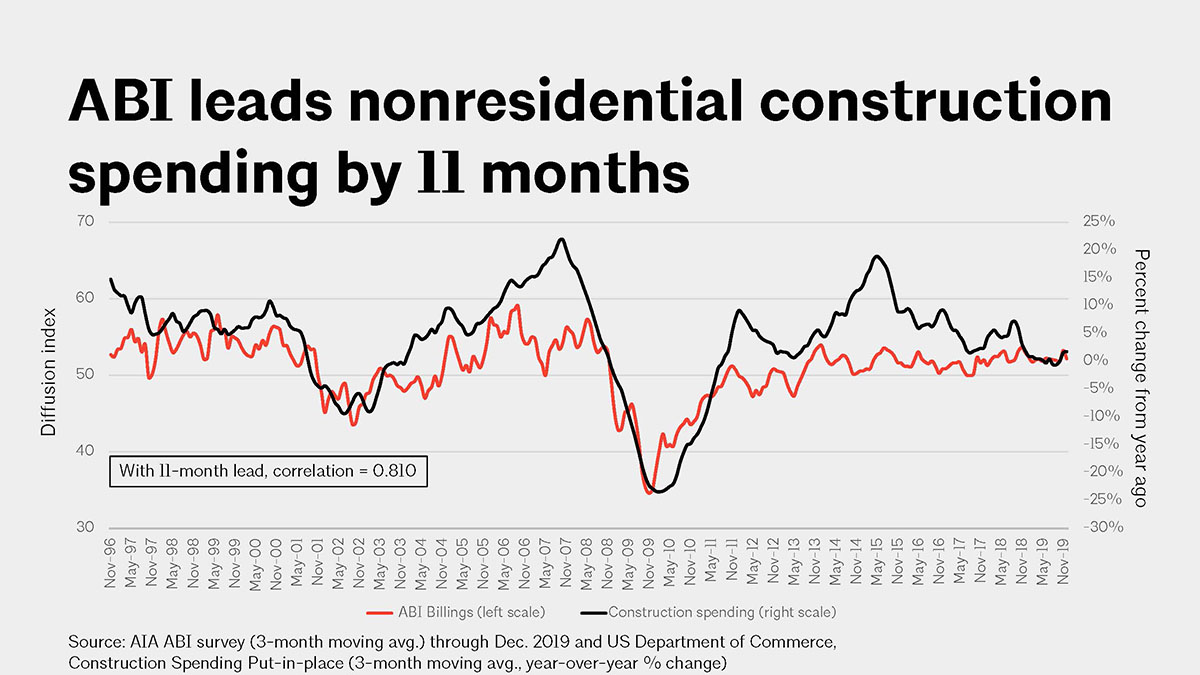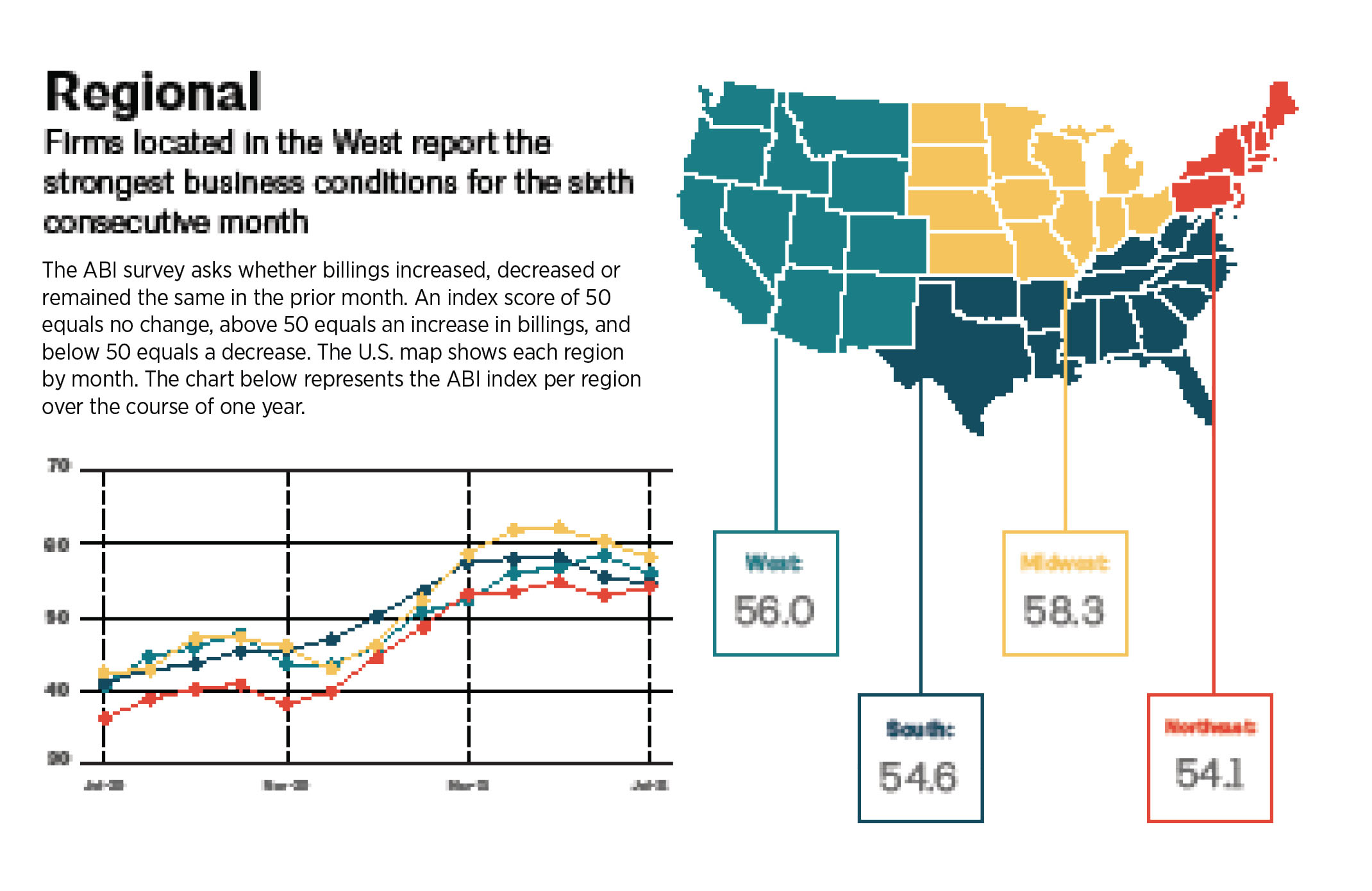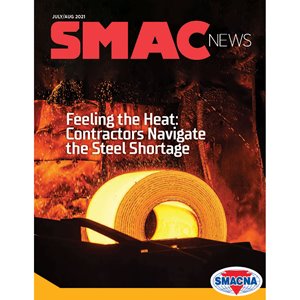ARCHITECTURAL: Architecture Billing Index, A Key Indicator of Construction Spending
The COVID-19 pandemic threw the brakes on the economy in 2020, shuttering businesses around the world and throwing millions of people out of work.
 The COVID-19 pandemic threw the brakes on the economy in 2020, shuttering businesses around the world and throwing millions of people out of work. In 2021, as the health situation improved, and businesses found new routines, owners breathed a sigh of relief, hoping life would quickly return to normal.
The COVID-19 pandemic threw the brakes on the economy in 2020, shuttering businesses around the world and throwing millions of people out of work. In 2021, as the health situation improved, and businesses found new routines, owners breathed a sigh of relief, hoping life would quickly return to normal.
So why did non-residential construction spending fall in early 2021, at the very time that other industries were starting to recoup? Jennifer Riskus, Director of Economic & Market Research for the American Institute of Architects, not only knows why it happened but was able to predict the drop. “It wasn’t historical, but there was a pretty sharp drop-off in construction spending early this year. Many people were surprised because they were seeing the overall economy starting to recover, and people getting vaccinated, but our data showed exactly what would happen.”
The AIA has been tracking activity at architectural firms across the United States since 1995. They publish their findings in the Architecture Billings Index (ABI), a key indicator of non-residential construction spending. “The ABI is a tool to understand where the economy is going and what impact it might have on industry,” Riskus says. “Architecture billing leads non-residential construction spending by about 9-12 months. What that means is that when business is picking up at the architecture firms, you can expect to see construction spending numbers start to pick up in 9-12 months. Conversely, if billing starts to decline at firms, you can expect to see a decline in construction spending about 9-12 months later.”
Even during the unprecedented challenges of 2020-2021, the relationship held firm. “Architectural billing plummeted to an all-time historical low in March of 2020 due to the pandemic,” Riskus says. “Construction spending decreased slightly during the earlier days of the pandemic, but really started to drop in early 2021, basically 9-12 months later. We’ve tracked this relationship through many cycles. The more data we have, the stronger the correlation is.”
Riskus collects data through a monthly survey of AIA member firms. “Our ABI panel comprises around 550 firms, and we get about 400 responses per month. Roughly half of the firms on the panel reply every month of the year, and the rest respond at least four or five times a year.” The firms are scattered across the United States for a wide lens view of the economy.
The ABI panel is different from the general AIA membership because many AIA firms have a single-family residence orientation. “We don’t let firms participate in the panel if 50 percent or more of their buildings are single-family residences. That makes our panel skew towards larger, very industrial firms.
“According to the US Census Bureau, about 70 percent of non-residential construction spending occurs within the first year of the project,” Riskus says. “Obviously, design comes before that. The architectural billing data helps companies determine when to ramp up or ramp down hiring in factories, when to adjust production, or how to refine business planning.”

These numbers are from the July ABI survey, showing a slight reduction compared to June, but still in positive territory.
Billing information is just part of the data the AIA collects. A recent survey included add-on questions about supply costs. It will be no surprise to SMACNA members that most architectural firms described supply problems. In May of 2021, 37 percent of panel firms reported that the increasing costs of basic construction materials was a serious difficulty, while 35 percent said it was a moderate challenge. Supply shortages of finished construction products have been less serious, but still an issue. “Overall, the good news is that increasing costs are not leading to outright project cancelations, though they might lead to smaller projects, higher construction bids, or project overruns.”
Anyone can purchase detailed industry reports from the AIA website. The institute even offers a sampling of free resources, such as the “Architect’s Journey to Specification” and “Designing the Construction Future: Reviewing the Performance and Extending the Applications of the AIA’s Architecture Billings Index,”which provides a good foundation to get a better understanding of the ABI.
Riskus is already planning her next white paper. “We will do an update after this business cycle, to re-evaluate the performance of the ABI during that construction cycle. It will be coming out in a year or so, once we see what’s changed and what hasn’t.”
Published: September 3, 2021
IN THIS ISSUE
ARCHITECTURAL: Architecture Billing Index, A Key Indicator of Construction Spending
The COVID-19 pandemic threw the brakes on the economy in 2020, shuttering businesses around the world and throwing millions of people out of work.
Capitol Hill Update: Main St. Efficiency Act | Davis-Bacon | COVID Reimbursement | School Retrofits
SMACNA joined leading business and efficiency groups in supporting small business efficiency upgrade incentives that will be simplified with the Main Street Efficiency Act of 2021.
Cooking Up Clarity
Bringing guidance to food processing industry projects was goal of new SMACNA guidelines.
From the President: Guiding Resources
First it was the supply chain, then lumber prices, then steel…and now the COVID-19 Delta Variant is set to add a lot of uncertainty into the third and fourth quarters of this year.
How Leaders Can Build Enduring Resilience
We’ve all heard the phrase, “It’s a marathon, not a sprint.”
HVAC and Sheet Metal Companies Navigate Steel Shortage
For nearly two years, the Covid-19 pandemic has triggered shortages of consumer goods in unexpected places. There were runs on cleaning products and toilet paper in the early days. Sporting goods stores have seen their selection of bicycles and
HVAC: Top Southeast Pediatric Healthcare System Taps Three SMACNA Members for New Campus
The Southeast’s top pediatric hospital system, Children’s Health of Atlanta (CHOA), will soon have a new hospital campus that provides advanced care for kids.
INDUSTRIAL: Industrial Safety: TAB Contractor Recognized
Beginning work at a nuclear power plant last year — the first new reactor construction in the United States since the Three Mile Island accident in 1979 — SMACNA contractor Research Air Flo expected heightened safety requirements.
RESIDENTIAL: Google Ads are a Great Way for Contractors to Gain New Business
For many contractors, Google Ads is a complex landscape, but with a couple of tips and tricks to simplify the process, Google Ads can be a very effective tool to gain new customers in new ways.
The 6 Most Common Mistakes Estimating Teams Make — and How to Overcome Them
The estimation process is critical to the success of any given project, but it’s also a leading indicator of the overall health of your construction business in the long term.
Upgrading Your Pre-Qualification Process to Today’s Market Demands
The purpose of a prequalification process is to evaluate whether a contractor is qualified to bid on a specific construction project.
Welcome New SMACNA Members




